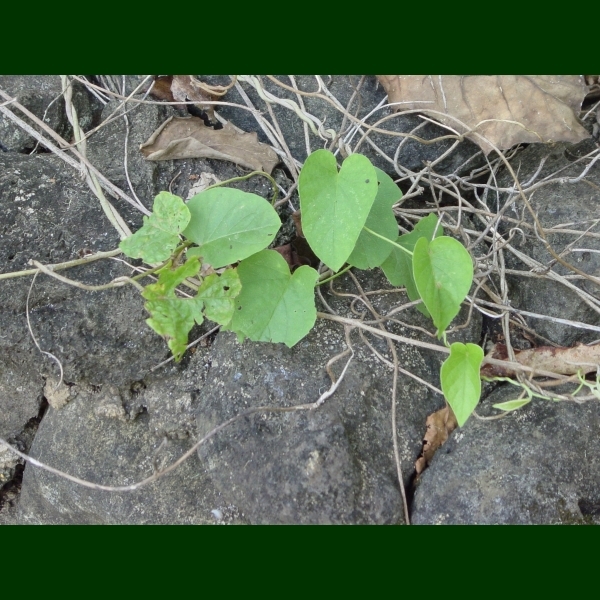 Hawaiian Name(s): koali ‘awa, koali ‘awahia, koali lā‘au (Ni‘ihau), koali pehu
Hawaiian Name(s): koali ‘awa, koali ‘awahia, koali lā‘au (Ni‘ihau), koali pehuScientific Name: Ipomoea indica
Vernacular Name: none
Family: Convolvulaceae
Status: indigenous
Authority: (J.Burm.) Merr.
Description: Vines; stems twining more than 5 m long, leaves 5-9 cm long.
Habitat Dry, disturbed areas, below 150 m (Wagner et al. 1990:556–557).
Medicines: All parts as purgative; stems/leaves crushed as a poultice for wounds and sores. Juice of roots, leaves, stem and flowers used as a laxative, and in treating broken bones, used along with a kī (ti, Cordyline fruticosa) leaf to protect the skin (Abbott 1992:100).
Non Medicinal Uses:
Specific gravity of wood: unknown
Famous Locations:
Mele:
`Ōlelo Noeau:
Dye Color and Parts:
Kino lau:
Location on Bishop Museum Kalihi Campus:
Propagation Information:
Seed: Seed length approximately 5 mm. Photograph: H.Lennstrom.

